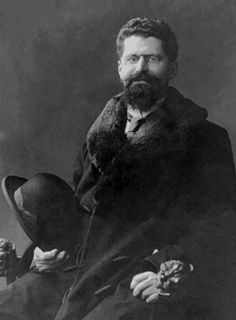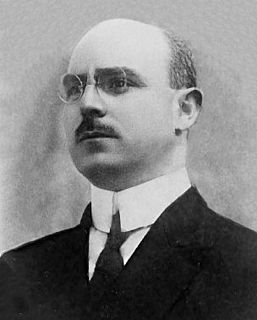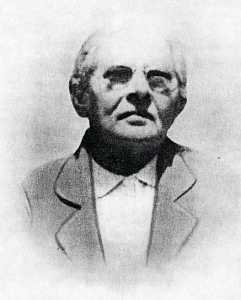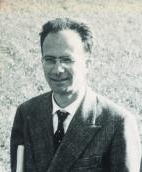
Guido Fubini was an Italian mathematician, known for Fubini's theorem and the Fubini–Study metric.

Gregorio Ricci-Curbastro was an Italian mathematician. He is most famous as the discoverer of tensor calculus.

Francesco Severi was an Italian mathematician. He was the chair of the committee on Fields Medal on 1936, at the first delivery.

Renato Caccioppoli was an Italian mathematician, known for his contributions to mathematical analysis, including the theory of functions of several complex variables, functional analysis, measure theory.

Mauro Picone was an Italian mathematician. He is known for the Picone identity, the Sturm-Picone comparison theorem and being the founder of the Istituto per le Applicazioni del Calcolo, presently named after him, the first applied mathematics institute ever founded. He was also an outstanding teacher of mathematical analysis: some of the best Italian mathematicians were among his pupils.
In the theory of functions of several complex variables, Hartogs's extension theorem is a statement about the singularities of holomorphic functions of several variables. Informally, it states that the support of the singularities of such functions cannot be compact, therefore the singular set of a function of several complex variables must 'go off to infinity' in some direction. More precisely, it shows that an isolated singularity is always a removable singularity for any analytic function of n > 1 complex variables. A first version of this theorem was proved by Friedrich Hartogs, and as such it is known also as Hartogs's lemma and Hartogs's principle: in earlier Soviet literature, it is also called Osgood–Brown theorem, acknowledging later work by Arthur Barton Brown and William Fogg Osgood. This property of holomorphic functions of several variables is also called Hartogs's phenomenon: however, the locution "Hartogs's phenomenon" is also used to identify the property of solutions of systems of partial differential or convolution equations satisfying Hartogs type theorems.

Gaetano Fichera was an Italian mathematician, working in mathematical analysis, linear elasticity, partial differential equations and several complex variables. He was born in Acireale, and died in Rome.

Antonio Signorini was an influential Italian mathematical physicist and civil engineer of the 20th century. He is known for his work in finite elasticity, thermoelasticity and for formulating the Signorini problem.

Carlo Somigliana was an Italian mathematician and a classical mathematical physicist, faithful member of the school of Enrico Betti and Eugenio Beltrami. He made important contributions to linear elasticity: the Somigliana integral equation, analogous to Green's formula in potential theory, and the Somigliana dislocations are named after him. Other fields he contribute to include seismic wave propagation, gravimetry and glaciology. One of his ancestors was Alessandro Volta: precisely, the great Como physicist was an ancestor of Carlo's mother, Teresa Volta.

Enzo Martinelli was an Italian mathematician, working in the theory of functions of several complex variables: he is best known for his work on the theory of integral representations for holomorphic functions of several variables, notably for discovering the Bochner–Martinelli formula in 1938, and for his work in the theory of multi-dimensional residues.

Giovanni Battista Rizza is an Italian mathematician, working in the fields of complex analysis of several variables and in differential geometry: he is known for his contribution to hypercomplex analysis, notably for extending Cauchy's integral theorem and Cauchy's integral formula to complex functions of a hypercomplex variable, the theory of pluriharmonic functions and for the introduction of the now called Rizza manifolds.
Federico Cafiero was an Italian mathematician known for his contributions in real analysis, measure and integration theory, and in the theory of ordinary differential equations. In particular, generalizing the Vitali convergence theorem, the Fichera convergence theorem and previous results of Vladimir Mikhailovich Dubrovskii, he proved a necessary and sufficient condition for the passage to the limit under the sign of integral: this result is, in some sense, definitive. In the field of ordinary differential equations, he studied existence and uniqueness problems under very general hypotheses for the left member of the given first order equation, developing an important approximation method and proving a fundamental uniqueness theorem.
Dionigi Galletto was an Italian mathematician and academician.

Luigi Amerio, was an Italian electrical engineer and mathematician. He is known for his work on almost periodic functions, on Laplace transforms in one and several dimensions, and on the theory of elliptic partial differential equations.
Dario Graffi was an influential Italian mathematical physicist, known for his researches on the electromagnetic field, particularly for a mathematical explanation of the Luxemburg effect, for proving an important uniqueness theorem for the solutions of a class of fluid dynamics equations including the Navier-Stokes equation, for his researches in continuum mechanics and for his contribution to oscillation theory.

Pia Maria Nalli was an Italian mathematician known for her work on the summability of Fourier series, on Morera's theorem for analytic functions of several variables and for finding the solution to the Fredholm integral equation of the third kind for the first time. Her research interests ranged from algebraic geometry to functional analysis and tensor analysis; she was a speaker at the 1928 International Congress of Mathematicians.
Carlo Miranda was an Italian mathematician, working on mathematical analysis, theory of elliptic partial differential equations and complex analysis: he is known for giving the first proof of the Poincaré–Miranda theorem, for Miranda's theorem in complex analysis, and for writing an influential monograph in the theory of elliptic partial differential equations.
Gianfranco Cimmino was an Italian mathematician, working mathematical analysis, numerical analysis, and theory of elliptic partial differential equations: he is known for being the first mathematician generalizing in a weak sense the notion of boundary value in a boundary value problem, and for doing an influential work in numerical analysis.
In mathematics, and particularly in functional analysis, Fichera's existence principle is an existence and uniqueness theorem for solution of functional equations, proved by Gaetano Fichera in 1954. More precisely, given a general vector space V and two linear maps from it onto two Banach spaces, the principle states necessary and sufficient conditions for a linear transformation between the two dual Banach spaces to be invertible for every vector in V.

Barbara Fantechi is an Italian mathematician and Professor at the International School for Advanced Studies. Her research area is algebraic geometry. She is a member of the Accademia dei Lincei.












